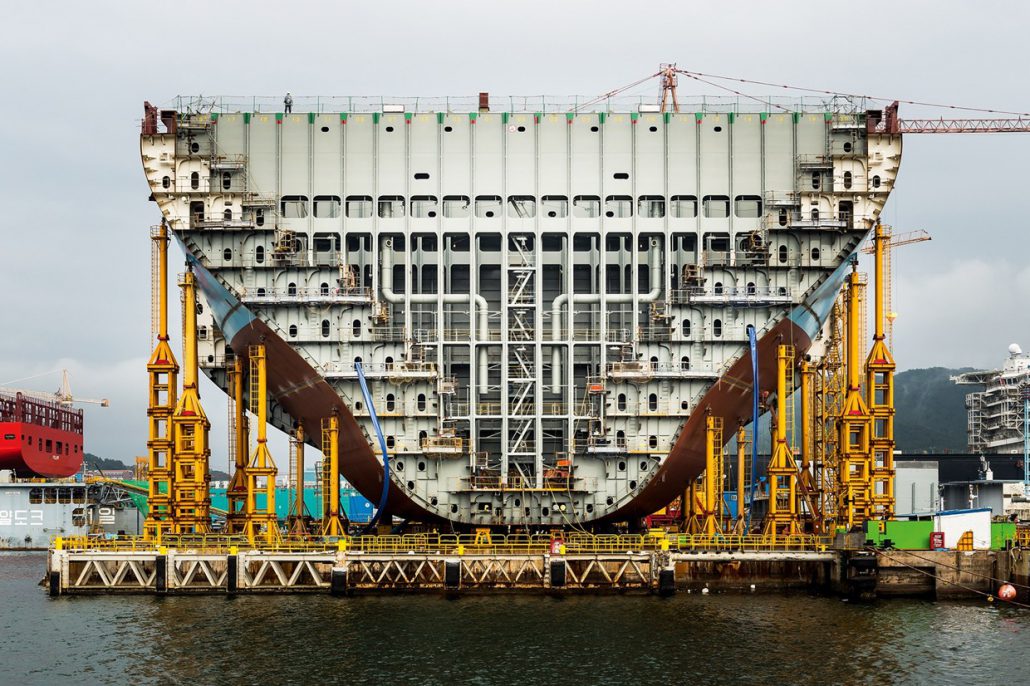
Investors’ changing preferences for new ships
Dramatic changes in shipping investors’ emphasis on newbuilding orders have unfolded in the past few years, causing divergent orderbook profiles. Some further shifts, perhaps equally striking, can be expected over the years ahead.
Collective preferences for new capacity in the world fleet of cargo-carrying merchant ships – comprising bulk carriers, tankers, container ships, gas carriers and other ship types – reflect numerous influences. A common enduring feature is the puzzle characterising many aspects of future events that will determine the merits of any investment.
Despite the challenges faced by investors, patterns have unfolded. These have resulted in current global newbuilding orderbooks for bulk carriers and tankers amounting to about a tenth of each category’s existing fleet deadweight capacity. By contrast, in the container ship segment the orderbook is a fifth of the current world fleet, while for gas carriers the total is almost a half.
Ordering flows
Looking at ordering patterns in the past few years in more detail, it is clear that two of the most notable changes in investors’ attitudes have evolved within the container ship and gas carrier sectors. The following outline uses data compiled by Clarksons Research and calculations by the article author.
Container ship orders – expressed in deadweight tonnes for comparison purposes, although the twenty-foot-equivalent or teu unit is the usual measurement – surged to 51m dwt in 2021. Annual volumes in the three preceding years averaged 11m dwt. Subsequently orders have declined, remaining relatively high at 31m dwt in 2022, and 18m dwt in 2023. So far this year activity has been subdued.
Gas carrier orders (liquefied natural gas and petroleum gas) are usually expressed in cubic metres but, again, deadweight is used here for comparison. Newbuilding contracts averaged 7m dwt in the three years up to 2020 after which there was a sustained upsurge to 11m dwt in 2021 and 19m dwt in 2022, followed by 11m dwt last year. During the early months of 2024 further brisk ordering has already amounted to over two-thirds of last year’s annual volume.
Newbuilding tanker orders saw a strong revival in 2023, when 38m dwt was contracted. This volume was almost quadruple the previous year’s depressed 10m dwt, the lowest since 1996. Recent years in the 2018 to 2021 period had averaged 25m dwt annually.
Bulk carrier ordering activity was relatively buoyant in 2023, totalling 49m dwt, compared with 37m dwt in the preceding year. Earlier, 52m dwt had been seen in 2021, double the previous twelve months’ volume, while the annual average for the 2018 to 2020 period was 34m dwt.
Extracting highlights from the foregoing outline, large fluctuations in newbuilding order activity occurred over the past few years, both among the various sectors and from year to year within each sector. A spectacular container ship newbuilding order increase seen in 2021 to 2022 has subsided. Large order increases for gas carriers in 2022 to 2023 continued into this year. Higher orders for tankers in 2023 also have continued into the current year.
What influenced these changes?
Differences in incentives and motivation for investors in individual sectors broadly explain variations in ordering patterns. More specifically, changing perceptions among market players of the balance between demand for and supply of vessel tonnage capacity in each category, and how this balance compares with those of other ship categories, are a vital aspect. The impact on freight rates and values of existing ships (secondhand prices) currently and expected in future years is a prominent influence.
In the container ship sector changing circumstances during and after the coronavirus pandemic – when changing consumer demand for manufactured goods, coupled with global supply chain disruption and delays at ports were prominent – was an upheaval with a positive impact. The tighter market and greatly increased container box rates resulting over an extended period raised profits, incentivising more investment in new ships on a major scale.
Stronger ordering of LNG carriers has been motivated by solid freight markets and expectations of world trade expansion over many years ahead, much of which is related to new export projects scheduled to begin, requiring additional cargo-carrying capacity. In the LPG carrier segment positive market sentiment also has been a substantial driver of newbuilding orders.
Within the tanker sector, over a number of years the newbuiding orderbook fell to a low level by the end of 2022, causing depressed deliveries last year contributing to a tightening market and higher freight rates. This change and prospects for a more balanced market ahead stimulated extra newbuilding orders in the past eighteen months. For bulk carriers, a restrained ordering trend has reflected freight market patterns and uncertainties about future propulsion alternatives as well as about longer term commodity trade growth prospects.
An overshadowing puzzle
Added complexity persists as a reason for variations in ordering activity. An existential factor in recent years and likely to continue for some time, based on the ideas of many shipowners and others involved in the global industry, is how to lower or eliminate carbon emissions economically. Decarbonisation of activities has become a top priority for the maritime industry. Yet, despite progress towards the target, it remains unclear what alternative fuels and technology will be viable on a longer term view.
Some owners have already decided to use LNG or methanol or ammonia in newbuilding vessels ordered. But for many prospective orders the choice of alternative fuel is not obvious. This dilemma reflects potential operational and cost problems surrounding future usage of most of the options, as well as uncertainty about what effect tightening international and regional regulations accompanied by mounting stakeholder pressures will have.
About 7% of the existing world fleet of merchant ships is capable of using alternative fuels or propulsion, a rising share. Within the overall newbuilding orderbook a much larger proportion, about half, is in the alternative fuels category. Over two-thirds of those orders are set to use LNG, 9% will use methanol, while smaller proportions use LPG, ammonia, ethane, biofuels and other energy sources according to Clarksons Research figures. This breakdown and other signs point to a diversified future marine fuel usage profile, with unpredictable proportions awaiting clarification.
Other influences affecting newbuilding orders have been prominent. Rapidly rising newbuilding prices, tightening slot capacity availability in some shipbuilding yards, and increasing financing costs amid higher interest rates all have an impact.
It seems clear that complications affecting the choice of what fuel and technology to embrace in a newbuilding is having a stifling impact on at least some and probably many investment decisions. As a consequence, orders for replacement tonnage in several sectors apparently were postponed in the past few years, contributing to an ageing world fleet of merchant ships.
Author:

Mr. Richard Scott, FICS, member of London & South East Branch committee, Institute of Chartered Shipbrokers Please contact the author if you have questions or comments at: bulkshipan@aol.com

